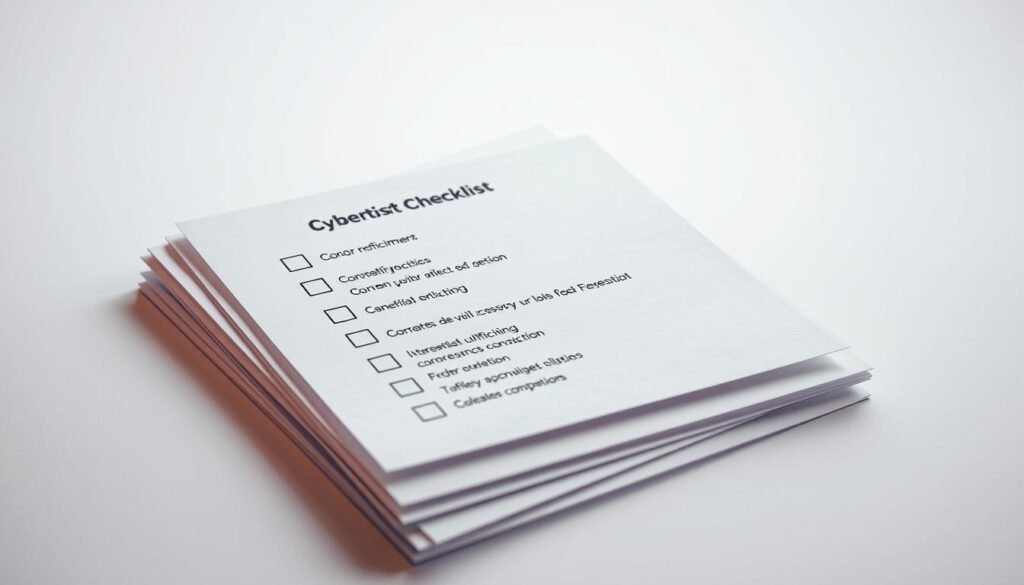cpm, or cost per mille, is the amount an advertiser pays a publisher for one thousand impressions. This metric tracks how much a site earns per thousand impressions and differs from click-based measures.
Use a simple calculation to align teams: CPM = (Total ad revenue / Total impressions) * 1000. Clear counting and ad quality controls matter because faulty setups can skew metrics and mislead revenue choices.
Seasonality shapes rates: demand often peaks late each month and in Q4, while January and early-month periods tend to be softer. The industry is still normalizing after recent shocks, so year-to-year trends and times of the month affect results.
This min read offers a list-style playbook for Google Ad Exchange. Expect practical actions that protect user experience, improve impression accuracy, and foster advertiser trust. Sustained gains come from testing, iteration, and focusing on brand-safe, performant inventory.
Key Takeaways
- cpm means cost per mille: cost for a thousand impressions and not a click metric.
- Use the CPM formula to keep reporting aligned and avoid miscounts.
- Seasonal shifts and early-year softness affect rates; plan around peaks and troughs.
- Quality controls and correct impression counting protect your metrics and revenue.
- Focus on testing, site performance, and advertiser trust for steady improvements.
Why CPM Matters Right Now: A List of What Publishers Should Focus On
Publishers must treat cpm as a real-time signal that reflects demand, audience value, and seasonality. Rates peak late each month and in Q4, while January and early-month periods often run softer.
Focus on audience value by shaping content and placements that attract higher-paying advertisers. Improve site performance and viewability so campaigns run cleanly and deliver expected revenue.
Diversify buyers and placements to reduce risk from competition or a paused campaign. Coordinate content calendars around year-defining events to match advertiser demand spikes.

Keep measurement timely so ad ops can react to cpms and demand shifts fast. Treat ad quality and policy compliance as non-negotiables; violations can depress rates.
| Focus Area | Expected Impact | Best Time | Priority |
|---|---|---|---|
| Forecasting & planning | Stabilizes monthly revenue | Month-start & Q1 | High |
| Audience & placements | Higher advertiser bids | Ongoing | High |
| Site performance | Better viewability & trust | Before peak periods | Medium |
| Buyer diversification | Resilience vs competition | Year-round | Medium |
This is a practical min read checklist of things to execute first. Small, steady fixes to campaigns, content, and technical performance will smooth cpms across the year.
Key Factors Affecting CPM in the Present Market
Market cpm now responds quickly to where buyers concentrate and how scarce premium placements are. Supply and demand drive short-term swings: when many advertisers target the same spots, rates climb. When inventory outpaces demand, prices fall even if impressions and viewers stay steady.

Seasonality creates compressed windows of intense competition. Retail peaks, holidays, and major events push campaigns into tight times and lift costs per auction.
Platform differences and geography shape baseline expectations. Mature markets like the US, Germany, and the UK typically bid harder, and some platforms favor higher video cpm than others.
| Factor | Impact | Action |
|---|---|---|
| Demand & competition | Raises or lowers rates quickly | Prioritize high-value placements during peaks |
| Audience precision | Higher relevance, higher cost | Balance segment size to keep delivery |
| Creative & format | Video and quality creative boost attention | Test creative sizes and placements for viewability |
Measure cost per placement, track device behavior, and run holistic tests. That helps isolate which factors move cpm without harming user experience.
Increase CPM with Google Ad Exchange: Actionable Optimizations
Tuning exchange settings and ad units helps your site match live buyer demand. Start by adjusting price floors to market conditions—lower during soft demand to keep fill, and raise slowly when demand strengthens to capture higher cpm.

Consolidate demand partners to favor quality advertisers that align with your brand and audience. Standardize high-performing formats and remove units that drag performance.
Run A/B tests for placements: above-the-fold, in-content, sticky, and native positions. Keep experiments small and measured so you can track which combos lift rates without harming user experience.
| Optimization | Immediate Impact | Measurement |
|---|---|---|
| Price floors | Better fill & pricing | Fill rate & cpm by placement |
| Quality demand | Higher bid consistency | Buyer win rate & revenue |
| Identity/ATS | Stronger addressability | Bid depth & effective rates |
Add responsive, mobile-first units and select brand-safe video or native where editorially suitable. Close the feedback loop: monitor by placement and campaign, then tweak price floors, density, and partners to sustain higher cpms over time.
SEO, Content Quality, and Core Web Vitals that Boost Ad Rates
Search visibility and on-page experience are core drivers that raise a site’s ad appeal for brand buyers.
Produce helpful content on a steady cadence and focus on topical depth. Better pages attract qualified traffic and make inventory more attractive to advertisers seeking brand-safe environments.
Improve Core Web Vitals—LCP, INP, CLS—and compress media to boost performance. Faster load times lower bounce, increase viewability, and can lift cpm and overall rates tied to cost per mille.
Structure pages with clean HTML, descriptive headings, and clear navigation. Internal links help users discover more articles, which raises engagement and session depth while improving ad exposure.

| Metric | Why it matters | Quick action |
|---|---|---|
| Core Web Vitals | Improves search ranking and viewability | Audit LCP/CLS; lazy-load images |
| Content depth | Drives qualified traffic from search | Answer intent; add internal links |
| Engagement signals | Predict premium ad delivery | Track scroll depth and engaged time |
Diversify Revenue and Optimize Performance for Higher, More Stable CPMs
A varied monetization plan—combining video, sponsorships, and affiliate offers—reduces reliance on any single platform and steadies revenue.
Mix demand sources: pair open auctions with programmatic deals and direct sponsorships to protect rates and keep advertisers engaged. Add video and rich media where they fit editorially, but set viewability and pacing targets to protect audience experience.
Layer affiliate links, sponsored content, and premium placements to broaden monetization without cluttering pages. Use identity solutions or ATS to restore addressability and help advertisers compete in cookie-restricted environments.
| Format | Benefit | Action |
|---|---|---|
| Video & rich media | Higher bids from brand advertisers | Test short videos with viewability goals |
| Direct sponsorships | Stable, higher rates | Package premium placements by audience |
| Affiliate & email | Incremental revenue and repeat traffic | Build newsletters and promote products |
| Addressability/ATS | Better competition among buyers | Enable identity solutions and monitor wins |
Treat yield as ongoing marketing: run floor and pacing routines, segment audiences by behavior, and share transparent reporting with advertisers. That approach supports steady revenue, protects user trust, and sustains higher cpms over time.
Putting It All Together for Sustainable Monetization
A steady revenue path blends audience-first content with disciplined testing and diversified demand. Align quarterly strategies so content, site fixes, and buyer plans push toward the same goals.
Start by mapping your audience and target content to placements with strong engagement. Run small A/B tests for units, frequency, and floors, then scale winners across templates.
Plan for seasonality. Package premium inventory ahead of peak time and refresh offers so advertisers can book priority placements when demand tightens.
Use weekly floor calibration and cultivate multiple demand partners to reduce single-buyer risk. Track outcomes beyond surface revenue: include viewability, engagement, and session depth as success metrics.
| Playbook Element | Primary Action | Key Metric | Timing |
|---|---|---|---|
| Quarterly plan | Align editorial, ad ops, and marketing | cpm & revenue stability | Quarterly |
| Experimentation | A/B test placements and floors | Engagement & viewability | Weekly to monthly |
| Demand mix | Onboard quality buyers and deals | Bid depth & advertiser retention | Ongoing |
| Reporting | Share dashboards and case studies | Advertiser wins & campaign performance | Monthly |
Commit to small, regular improvements. Over time, these strategies lift rates, protect user experience, and grow sustainable monetization and revenue.
Conclusion
A site’s ability to turn traffic into steady revenue depends on strong content, clear audience signals, and ad treatments that respect viewers.
Reaffirm the core metric: cpm and cpms reflect the cost per mille or per thousand impressions that advertisers use to value inventory. Treat that metric as one of several signals—alongside engagement and viewability—when you set floors and packages.
Focus the playbook: sharpen content, align audiences with advertiser targets, and diversify demand with video, direct deals, and programmatic buyers. Test placements and cost per thresholds continuously so wins compound over time.
Plan for seasonality, measure outcomes that matter, and share transparent reporting with advertisers. Publishers that invest in audience-first content, addressability, and varied ads will lift cpms and build durable website monetization.
